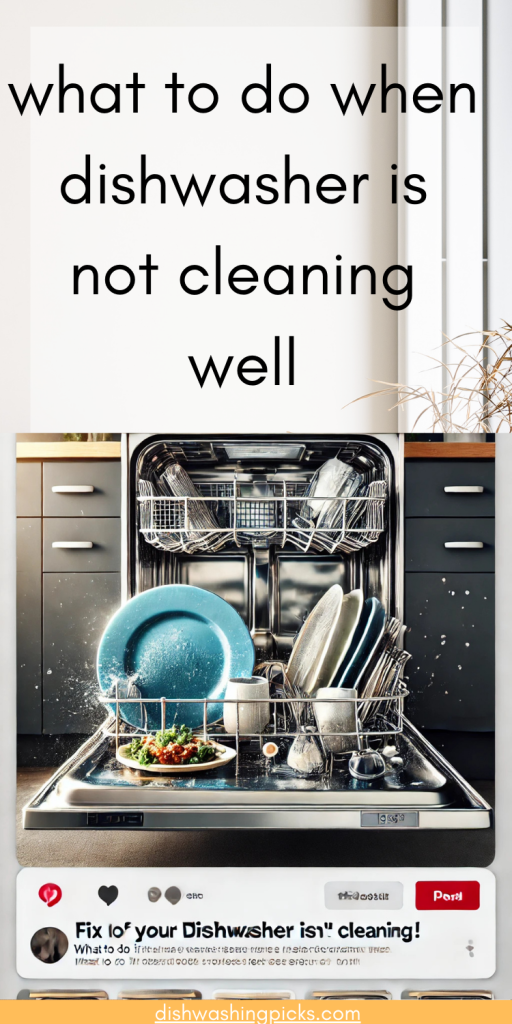Ever pulled out your dishes after a cycle only to find bits of food, cloudy glasses, or greasy plates? Frustrating, right? A dishwasher is supposed to make life easier, not leave you rewashing everything by hand. But don’t worry—before you start shopping for a new one, let’s troubleshoot the problem.
1. Check the Basics: Are You Loading It Correctly?
Believe it or not, how you load your dishwasher makes a huge difference.
Common mistakes:
- Blocking the spray arms with large dishes.
- Nesting utensils together so water can’t reach them.
- Overloading racks, preventing water from circulating properly.
The right way to load your dishwasher:
- Plates and bowls should face the center, where the spray arms reach best.
- Avoid stacking items—water needs space to flow.
- Place cups and glasses upside down on the top rack.
- Mix up silverware so spoons and forks don’t stick together.
A quick adjustment in loading might be all you need for cleaner dishes.
2. Clean the Filter – It Might Be Clogged
If your dishwasher isn’t cleaning well, the filter could be the culprit. Many dishwashers have a removable filter at the bottom that traps food particles.
How to clean the filter:
- Remove the bottom rack and locate the filter (usually a round or rectangular piece).
- Twist or pull it out (check your manual if unsure).
- Rinse it under warm water and scrub with a soft brush if needed.
- Reinstall and run a test cycle.
How often should you clean it?
At least once a month—or more often if you don’t pre-rinse your dishes.
3. Inspect the Spray Arms – Are They Clogged?
Spray arms are like the “showerheads” of your dishwasher. If they’re blocked, water won’t reach your dishes properly.
How to fix it:
- Remove the spray arms (usually, they snap or twist off).
- Use a toothpick or small brush to clear out any clogged holes.
- Rinse under warm water and reinstall.
Tip: Hard water can lead to mineral buildup in the spray arms. If you see white deposits, soak them in vinegar for 30 minutes before rinsing.
4. Use the Right Detergent (and Rinse Aid!)
Not all detergents are created equal. If your dishes aren’t coming out clean, your soap might not be cutting it.
Powder, Liquid, or Pods?
- Pods/tabs: Convenient and pre-measured, but some dishwashers struggle to dissolve them fully.
- Powder: Great for hard water areas but can clump if exposed to moisture.
- Liquid: Dissolves quickly but may not be as powerful for tough grime.
Bonus tip: Add rinse aid. It helps water slide off dishes, reducing spots and streaks.
5. Check the Water Temperature – Is It Hot Enough?
For best results, your dishwasher water should be at least 120°F (49°C). If it’s not hot enough, detergent won’t activate properly, and grease won’t dissolve.
How to test your water temperature:
- Run the kitchen sink on hot for a minute.
- Fill a glass and check with a thermometer.
- If it’s below 120°F, adjust your water heater or run hot water before starting the dishwasher.
6. Try a Deep Clean – Your Dishwasher Needs It!
Even dishwashers need cleaning. Grease, food particles, and soap scum can build up over time, affecting performance.
How to deep clean your dishwasher:
- Vinegar rinse: Place a cup of white vinegar in a dishwasher-safe bowl on the top rack. Run a hot cycle (no detergent, no dishes).
- Baking soda boost: Sprinkle 1 cup of baking soda in the bottom and run a short cycle to freshen things up.
- Wipe down seals & door: Use a damp cloth with vinegar to clean the rubber gasket and door edges.
Do this once a month for a sparkling clean dishwasher.
7. Look for Drainage Issues
If dirty water is pooling at the bottom, your dishwasher might not be draining properly.
How to troubleshoot:
- Check the drain hose for kinks or clogs.
- Make sure the garbage disposal (if connected) is clear.
- Clean the drain filter at the bottom of the dishwasher.
Standing water means food debris or grease is stuck somewhere—clearing it should help.
Final Thoughts: Keep It Running Like New!
If your dishwasher isn’t cleaning well, don’t rush to replace it. Try these quick fixes first:
✅ Load it correctly for maximum water flow.
✅ Clean the filter and spray arms.
✅ Use the right detergent and rinse aid.
✅ Make sure your water is hot enough.
✅ Deep clean it once a month.
✅ Check for drainage issues.
With a little maintenance, your dishwasher will be back to doing its job—so you don’t have to.
Which of these tricks are you going to try first? Let me know in the comments.

